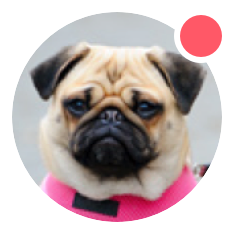Dogs with contact allergies will have outbreaks at the site of contact and sometimes around the face and groin area and the pads of the paws as well. Symptoms of allergies tend to get more dramatic with each subsequent exposure. Food related allergies may include nausea, vomiting, and diarrhea along with the other symptoms of an allergic response, which can include:
- Bumps
- Chewing on affected areas
- Coughing
- Ear infections
- Hair loss
- Itching
- Nasal congestion
- Obsessive licking
- Oozing sores
- Redness
- Scratching
- Thickened skin
- Ulceration of the skin
Types
Food allergy - A food allergy is a response by the portion of the body’s immune system that is located in the gastrointestinal system to defend itself against a threat. An allergic reaction doesn’t happen the first time an individual is exposed to the allergen but rather after repeated exposures. Any ingredient is capable of causing an allergic reaction, but some foods, such as beef, chicken, dairy, and eggs tend to cause allergies in canines more often than others.
Contact allergy - Allergies in canines are the defensive mechanism of the immune system which employs specialized immune cells in the dog’s body to defend it against an amino acid that it has labeled as an invader. The specialized cells the body employs to protect the body are known as mast cells, and when the immune system is stimulated by the amino acids, known as allergens, the mast cells release histamine into the animal’s system. Histamine has an inflammatory effect on any tissues that it comes into contact with. The inflammation is what causes the itchy and swollen skin conditions characteristic of most allergic reactions in canines.
